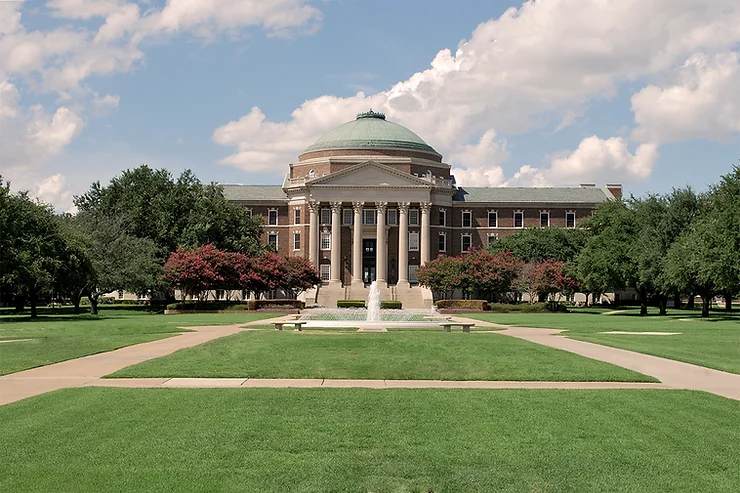
One of the first and most often overlooked steps in applying to college is deciding where to apply. As a high school student, especially at a public high school but at private ones as well, you rarely receive any helpful information about what differentiates colleges.
For example, my parents worked at the University of Washington (UW), and living near Seattle this is what I thought a typical college was like in size, style, etc… I was shocked to show up at Yale and find its campus much smaller and its buildings often much older despite a much larger endowment. I didn’t realize that UW, at 29,000 undergraduates, was a rather large school with about six times as many students as Yale.
So how do you approach sorting through the thousands of colleges across the United States and even more all over the world, and what factors are important to consider when choosing to which you want to apply?
Location
Many students choose to go to school near home, whether to go to the same college as high school friends, be familiar with the region, or visit parents frequently. Others choose to explore a new place, new coast, or new country with this time. You might already have a feeling about whether you want to explore or stay close to home, but there are other important factors to consider with location.
Weather is often overlooked in applying to college. Do you mind the snow? Do you enjoy it? Do you own good winter clothing? Can you stand sunny all year round, or is that a recipe for constant sunburn. A number of Canadian schools and some in the far Northeast United States have snow on the ground for most of the academic year—others in the Southern US never see it. Travel is also an important consideration for some, as flying back and forth to a college across the country multiple times a year can be a significant monetary and temporal expenditure.
East coast, west coast, or in between is an important question for many. Others consider whether they could handle the cultural shift of moving from a blue state to a red state or vice versa. Keep in mind that regardless of your school’s location, you’ll likely be meeting students from all over the world.
Often, I think the question boils down to where you might want to live after graduation. You’ll make important connections and friends in college, some that you might have trouble maintaining if you move far away after.
Size
Often students cite a “tight-knit community” as one of their hopes for college, but again the dilemma is not as simple as it seems. Many large Universities have great subcommunities, and small colleges might keep you stuck around people you don’t like that much for four long years.
Small schools, which I’ll classify as fewer than around 1,000 undergraduates per class, offer the opportunity to see many faces you know as you walk around campus. They usually have many small classes and high faculty to student ratios, providing great ways to connect with professors. They also give you the opportunity to feel like a true individual, charting your own path, getting special administrative attention, and contributing in a meaningful way.
Medium (4,000-15,000 undergraduates) and large schools (>15,000 undergraduates) offer plentiful opportunities for research and large picturesque campuses. You can sometimes find others with the exact same niche interests as you, but you’re more likely to find yourself lost in the crowd. You’ll have more lectures and need to put effort into getting to know professors. Alumni networks and professors with reputations can help you make professional connections. Sports are often part of campus culture and bring people together, but you might be more likely to live in off-campus housing in later years.
Academic Fit
It almost goes without saying, but you want to go somewhere that is strong in your area/s of interest. If you are applying to top fifty schools, you often don’t have to worry much about this, but outside of these there are significant fluctuations. It is generally easy to roughly evaluate general program strength with rankings from Niche or US News and World Report.
You should also consider the curriculum. The biggest distinction here is between liberal arts curricula, which have distributional requirements and emphasize exploration, and more technical programs, which focus on particular subjects, but there are other important differences. If you’re interested in engineering, for example, do you want a more theoretical approach like Caltech’s or a more practical one like MIT’s?
I always recommend you find the department or major you want to pursue at a college and investigate its list of requirements. Furthermore, look up the general requirements for graduation. For example, these are Yale’s distributional requirements, and here are the requirements for the Computer Science Major. Are these classes you’re interested in? Do you want to take foreign language courses in college, or you rather hunker down on programming?
In addition, there are often considerations here to do with when you have to commit to your major and how this process works. Some Universities have capacity constrained majors, which might prevent you from studying the area you’re interested in. Others admit students to the engineering school separately and you have to apply to switch in or out. If you might be pre-med or pre-law, consider the advising resources available.
List Design
A balanced list includes two or three safeties, which I define as schools you are confident you will get into that you would be happy to attend. Refrain from thinking of any college with an acceptance rate of less than 50 percent as a safety—which this may seem like a high acceptance rate to you, this means they reject more than half their applicants! Would you want to risk your ability to enroll in University on something with worse odds than a coin flip? However, you can generally consider something a safety if your GPA and scores are above the 75th percentile for admits—most colleges publish the middle 50 percent of scores, GPA, and other statistics for their first-year class (Search class profile or admission statistics; see Stanford’s here for example).
Once you’ve found two schools you are confident you can get into, based on their average admit profile and their acceptance rate, and that you would enjoy attending, not much can go wrong. Pick some schools that you have a shot at, often called target schools, that you would be thrilled to attend. Usually, I recommend around five or six of these. Something can be considered a target school if you are within the middle 50 percent of GPA and test scores.
If you want, pick a few more selective schools that meet your criteria particularly well. “Reaches” are schools that are in the top twenty or that your scores and GPA are below the 25th percentile of admits for. I don’t recommend having a school list longer than twelve institutions because it’s very difficult to dedicate sufficient time to each application.
Reputation
This shouldn’t be a factor. Focus on finding a college that will help you learn and grow as a person, not one you can brag about. Whatever career you are looking for or whatever you want to do in life, you can achieve without having gone to Harvard, Yale, Princeton, Stanford, or MIT. Apply to these places only if genuinely interested in the programs they offer and benefiting from the intense rigor of these academic communities.
Summary
A great place to start searching for schools is on Niche or US News and World Report for the top colleges in a particular state or in the country in your field of interest (for example, here are the best colleges for biology in Washington according to Niche). You can also filter by selectivity, size, cost, and other factors. CollegeHunch is also a very useful app with advanced filter and sort options to narrow down your college list based on a variety of factors.
Consider size, location, and academic fit when making your list of schools. It may feel petty to cross a great school of your list because it’s in the wrong state or not the right size, but these are important factors.
Try to narrow down your list to ideally around eight to twelve schools—at least two safeties, maybe five or six targets, and three or four reaches.
Don’t think much about reputation or prestige when applying to college. The US and the world are full of amazing institutions that will provide you the tools to succeed in life and more. Approach this process as someone looking to find hidden gems, often overlooked in favor of big names, like Bowdoin, Hillsdale, or Harvey Mudd.
Finally, many senior high school students were hoping to visit colleges throughout this spring and over the summer. Some schools are now offering virtual visits, and the following websites provide good options to learn about and e-visit colleges in which you’re interested: www.campusreel.org, www.youniversitytv.com, www.youvisit.com. The National Association for College Admission Counseling (NACAC) also created a useful, searchable tool of colleges and universities that offer virtual tours and online events on its website.

